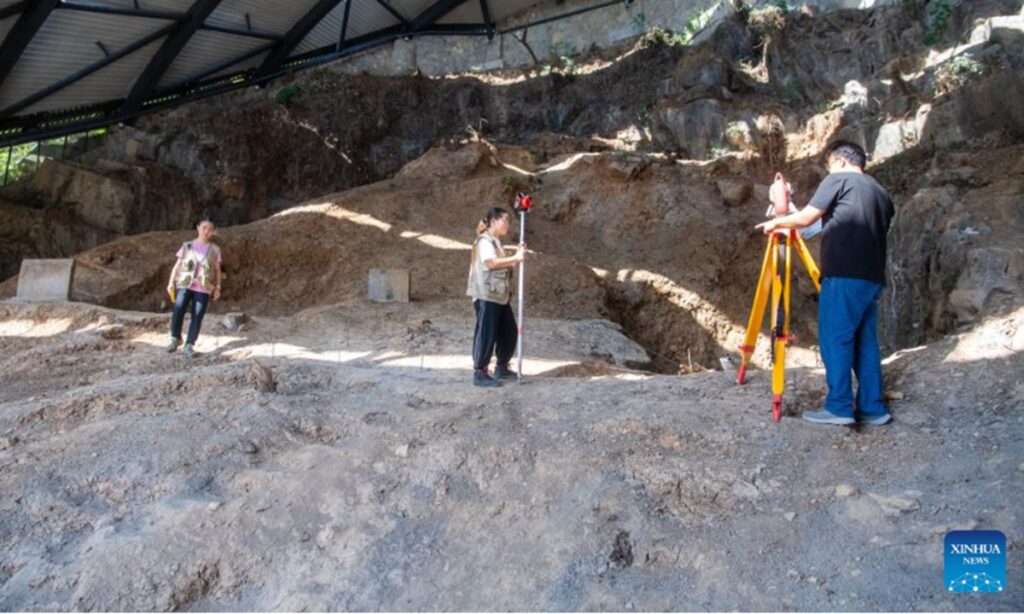On Wednesday, the fifth stage of archaeological excavations at the Longgupo Site in Southwest China’s Chongqing Municipality officially commenced. This phase is expected to yield a treasure trove of ancient human remains, prehistoric animal fossils, and related artifacts, according to a report by the Xinhua News Agency.
The latest excavation, the most significant endeavor undertaken at the site in more than a decade, covers an excavation area of 30 square meters and is set to continue until November.
The Longgupo Site provides rich materials for understanding the process of human development and demonstrating the million-year human history in the Three Gorges area between Chongqing and Central China’s Hubei Province, which is of great academic significance and has a wide social impact, the 91-year-old Huang Wanbo said, who is a member of the expert group responsible for the excavation.
Situated in Wushan county, the Longgupo Site stands as one of the most ancient and culturally rich prehistoric cultural sites on the Eurasian continent. With a history spanning over 2 million years, the site gained prominence in 1985 when it yielded the earliest known human fossil in East Asia, earning it the moniker “Cradle of East Asian Humanity.”
The site has yielded a wealth of artifacts containing information about ancient humans, the remains of paleo-organisms and the ancient environment, dating back from 1.8 to 2.48 million years ago. These have enabled researchers to trace the historical formation of the Three Gorges region, the evolution of ancient ecosystems and environments, the origin and evolution of humans, and facilitated a comparative study of ancient cultures between the East and West, according to media reports.
Incomplete records indicate that the first four excavation phases unearthed 116 species of mammal fossils and over 1,000 stone tools, Huang noted on-site.
From 1984 to 2006, under the leadership of Huang, the Longgupo Site underwent three systematic excavation phases. During the fourth phase of archaeological excavation from 2011 to 2012, a combined approach of traditional Chinese and French archaeological methods resulted in the discovery of over 200 distinctly human-modified stone artifacts and more than 100 mammal fossils. These findings provided crucial research materials for investigating the technological and behavioral patterns of early humans in the Three Gorges region, Mu Fengjing, director of the Three Gorges Museum, said.
Huang expressed hopes for new discoveries in this fifth phase to further substantiate the argument that East Asian humans originated in the Yangtze River’s Three Gorges region and enhance the cultural significance of the Longgupo site.
(Global Times)




